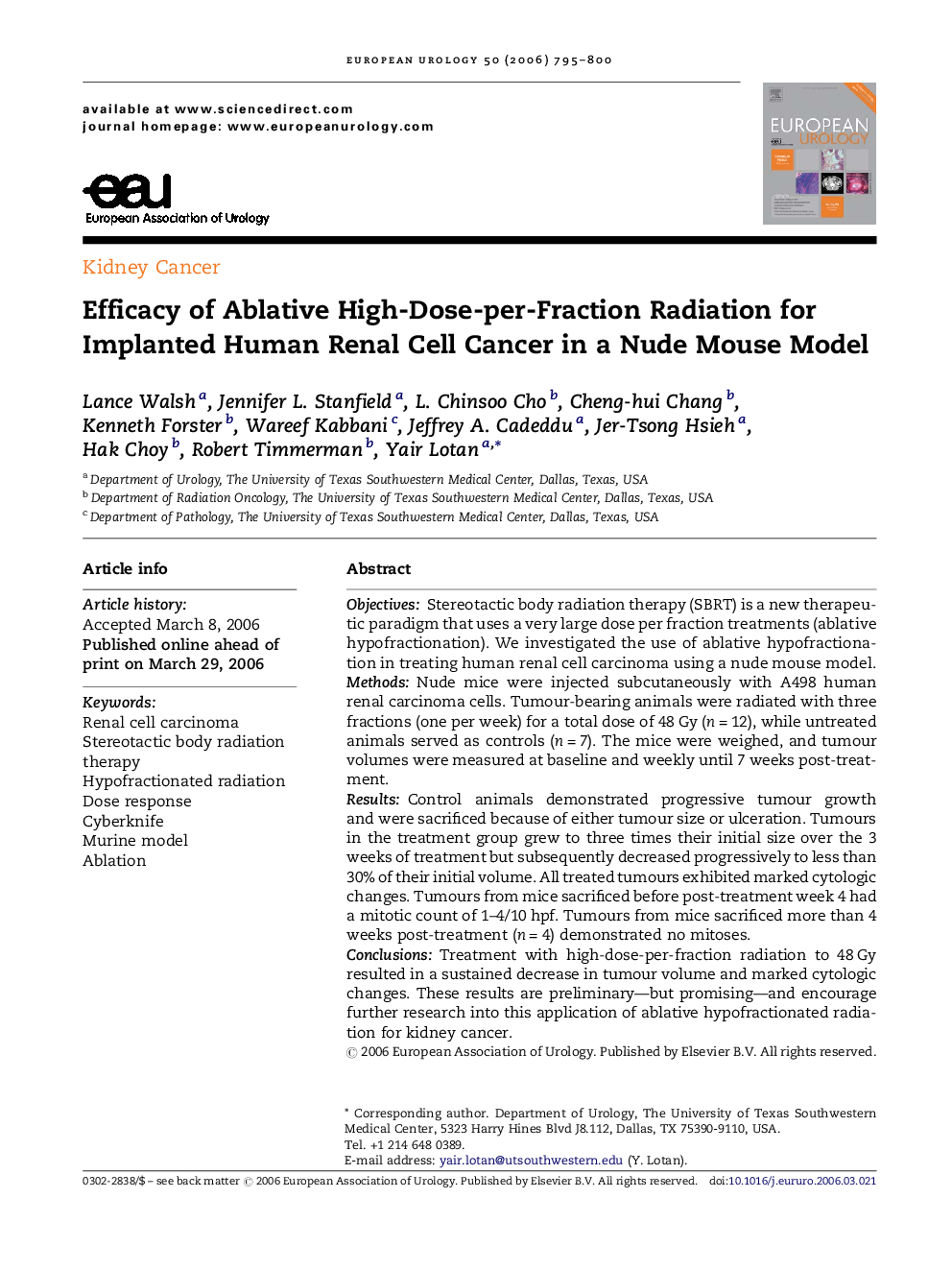| Article ID | Journal | Published Year | Pages | File Type |
|---|---|---|---|---|
| 3925857 | European Urology | 2006 | 6 Pages |
ObjectivesStereotactic body radiation therapy (SBRT) is a new therapeutic paradigm that uses a very large dose per fraction treatments (ablative hypofractionation). We investigated the use of ablative hypofractionation in treating human renal cell carcinoma using a nude mouse model.MethodsNude mice were injected subcutaneously with A498 human renal carcinoma cells. Tumour-bearing animals were radiated with three fractions (one per week) for a total dose of 48 Gy (n = 12), while untreated animals served as controls (n = 7). The mice were weighed, and tumour volumes were measured at baseline and weekly until 7 weeks post-treatment.ResultsControl animals demonstrated progressive tumour growth and were sacrificed because of either tumour size or ulceration. Tumours in the treatment group grew to three times their initial size over the 3 weeks of treatment but subsequently decreased progressively to less than 30% of their initial volume. All treated tumours exhibited marked cytologic changes. Tumours from mice sacrificed before post-treatment week 4 had a mitotic count of 1–4/10 hpf. Tumours from mice sacrificed more than 4 weeks post-treatment (n = 4) demonstrated no mitoses.ConclusionsTreatment with high-dose-per-fraction radiation to 48 Gy resulted in a sustained decrease in tumour volume and marked cytologic changes. These results are preliminary—but promising—and encourage further research into this application of ablative hypofractionated radiation for kidney cancer.
